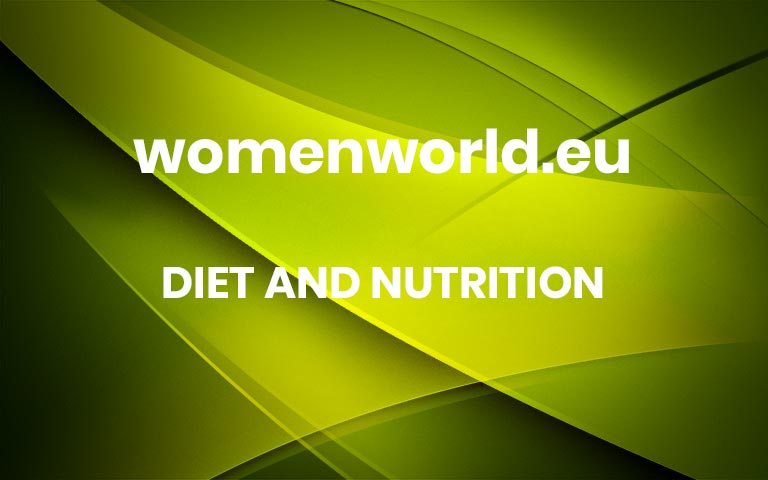Healthy Women Swear This “Rule” Is the Best-Kept Secret for Optimal Nutrition
If there’s one thing we’ve learned from diet culture, it’s that restricting your favorite foods or swearing off certain food groups altogether (FYI, carbs are not the enemy) is not the answer to eating healthier, losing weight, getting in shape, or feeling better. In the dieting world where detoxes and quick fixes often prevail, we’ve been conditioned to go to extremes to achieve said goals and look a certain way. ICYMI, diets are not sustainable, and definitely not any fun.
In contrast, the 80/20 style of eating is touted to be in it for the long haul. A flexible approach to eating, the 80/20 diet or rule’s MO is simple: Nosh on nutrient-dense foods 80 percent of the time and enjoy less nutritious eats the remaining 20 percent. Translation: You can have your cake and eat it too—just make sure you have it alongside some fruits and veggies. So, how exactly do you practice the 80/20 diet, and is it worth trying? Keep reading to find out what registered dietitians have to say.
In this article
What is the 80/20 Rule?
A healthy, well-balanced diet makes room for all foods—including indulgences (AKA foods that bring you joy). With the 80/20 eating plan, you can indulge in pizza night or National Ice Cream Day (nothing is off the table!) and still feel your best because you’re filling your plate with whole grains, lean proteins, fruits, vegetables, and healthy fats the majority of the time. You could call it the antidote to fad diets.
“The 80/20 rule, also known as the 80/20 diet, is a flexible approach to eating that emphasizes balance and moderation,” explained Barbara Kovalenko, a registered dietitian and nutrition consultant at Lasta. “It suggests that 80% of your diet should consist of nutritious, whole foods, while allowing for 20% flexibility to enjoy indulgent or less nutritious foods. The goal is to create a sustainable eating habit that doesn’t require you to completely cut out foods you love, but rather encourages overall balanced eating.” “The remaining 20% allows flexibility for enjoying foods that may not be as nutritious, but are satisfying or enjoyable to you,” agreed Chrissy Arsenault, MBA, RDN, a registered dietitian at Athletic Muscle. “It can include treats, desserts, or occasional indulgences that you might otherwise restrict in a more rigid diet.”
How can I put it into practice?
The jury is still out on what a “healthy diet” really means because there’s no one-size-fits-all diet—it looks different to every single person. The 80/20 rule can be effective because it’s adaptable and completely open to interpretation. After all, we each have our personal food preferences and go-to indulgences, whether it be peanut butter cups (it’s me, hi), potato chips, or your grandma’s famous lasagna. According to Johna Burdeos, a registered dietitian, the most important thing is to do what works for you that you can stick to. That said, she provided general tips for adopting the 80/20 diet:
Focusing on adding in foods that make you feel good
Focus on eating plenty of fruits, vegetables, whole grains, lean proteins, and healthy fats. These foods are nutrient-dense, so they will help you feel full and satisfied without overeating (read: focus on adding nutritious foods, rather than subtracting less nutritious foods). Choose lean protein sources, such as fish, chicken, eggs, and legumes (i.e. beans, lentils, and chickpeas). These foods are high in protein, which is critical for hormonal health, building and repairing muscles, and many more functions in the body.
Decide what indulgences are worth having
While other non-sustainable (and harmful) diets may claim you need to ditch indulgences, the 80/2o principle instead views indulgences as a key part of a healthy diet and encourages you to be mindful about which foods genuinely bring you happiness versus what you may be eating out of mindlessness or habit. Maybe you decide to stop buying potato chips and Oreos at the grocery store so you fuel your body with foods that help you feel good throughout the week, and then enjoy your favorite pasta and chocolate cake when you eat out on Friday night.
Or maybe your daily scoop of ice cream is a major source of joy, so you know to load up on fruits, veggies, clean proteins, and whole grains throughout the day so your body can feel its best. There are less nutritious foods that we use out of habit or to self-soothe, and then there are less nutritious foods that bring us so much joy and help us celebrate life. It is up to you to decide which foods fall into each category for you, and what foods (both nutritious and less nutritious) are a part of your best life.
Enjoy (all) of your food
The key to making 80/20 work for you is to do so without restriction and without glorifying or villainizing any foods. It does not mean you force yourself to eat bland food for 80% of your life in order to “earn” the food you love. 80/20 is simply a mindset reframe that you can fully enjoy your birthday cake, a weekly glass of wine with friends, or your favorite Sunday takeout dinner and still have a “healthy diet.” But that doesn’t mean when you’re not “indulging,” you shouldn’t be enjoying. Instead of forcing yourself to eat boring salads or bland protein and veggies, experiment with healthier versions of foods you love (think: chickpea pasta, flavorful stews, sushi bowls, etc.) and add flavor with spices, herbs, and homemade sauces. Bottom line: You deserve to enjoy all your food, no matter if it’s categorized in the 80% or 20%.
Make a plan that works for you
We’re typically wary of numbers when it comes to nutrition (tracking calories is so 2015, thank god), but 80/20 is not meant to be something you rigorously track. You don’t need to measure out a week’s worth of food to make sure that exactly 80% is nutritious or you’re limiting indulgences to exactly 20% of your diet. Instead, you can use it as a general frame of reference to know that you can indulge and fully enjoy foods you love because you’re filling your body with nutrients that make you feel amazing most of the time.
Every person’s version of 80/20 may look different. Arsenault explains that it could mean four out of five daily meals or snacks being more nutrient-dense with a daily “treat,” eating nutrient-focused on weekdays and indulging a little more on the weekends, or being mindful of eating more fruits, veggies, and nutrient-dense whole foods when you know you’re going to indulge a little more like on a vacation. Apply the 80/20 mindset to however it works best in your life, knowing that the end goal is to live a balanced lifestyle where your body and joy are both prioritized.
What are the benefits?
It encourages balance
Step aside, engrained food rules. “The 80/20 ‘diet’ promotes a balanced approach to eating by allowing for flexibility and moderation,” Arsenault said. “It can help prevent feelings of deprivation or the sense of being on a restrictive diet, which can be difficult to sustain long-term.” Bottom line: Any and all foods are welcome in moderation. The 80/20 non-diet “diet” offers a framework that provides the structure for a healthier eating plan but with freedom from restrictions and rules. “Allowing occasional indulgences can help maintain a positive relationship with food and prevent feelings of guilt or shame,” Arsenault affirmed. Kovalenko agreed, explaining that the 80/20 way of eating can reduce the likelihood of restrictive behaviors or disordered eating patterns.
It’s actually sustainable long-term
Depriving yourself of “bad” foods or foods you love is a recipe for disaster (read: excessive cravings, overeating, or binge eating). Plus, deeming certain foods off-limits over an extended period of time is unfeasible and can be detrimental to your health. The good news? “The 80/20 rule is often seen as a more sustainable approach compared to strict or extreme diets where you stop following it after 1-2 weeks,” Arsenault conveyed. “It recognizes that it’s unrealistic to completely avoid all ‘unhealthy’ foods, and by incorporating them in moderation, it becomes easier to stick to a healthy eating plan over time. This creates more of a sustainable habit that you can maintain.” Unlike many other eating plans that have servings, macronutrients, or calories to count (which are unsustainable at best, but potentially harmful), the 80/20 rule is less rigid and more about doing what feels right to you.
It can improve your overall health and make you feel better
Because the 80/20 rule calls for eating mainly whole, nutrient-rich foods, you may notice other perks besides feeling free from restrictive diet rules. “Eating nutritious foods can give you more energy, improve your mood, and help you sleep better,” Burdeos said. But also, joy is a nutrient too. According to US News & World Report, we have better digestion, nutrient absorption, and less of a tendency to overeat when we’re eating food we enjoy. As registered dietician, Brigitte Zeitlin told Well+Good, “Food is nourishment in a lot of different ways…it also nourishes our soul, and we should be eating foods we like, foods that feel good to us.” 80/20 allows for the benefits that come with enjoying your food without deprivation and filling your body with a variety of nutrients–both of which are necessary for optimal health.
Are there any potential downsides?
While the 80/20 approach to eating clearly has bragging rights, it does come with some potential drawbacks. “It may lack structure for some people,” Burdeos noted. “It can be hard to define what ‘healthy’ and ‘unhealthy’ foods are. What is considered healthy for one person may not be healthy for another. So it is important to be mindful of your own individual needs and goals when following the 80/20 diet.” Arsenault also alluded to its vagueness: “The 80/20 rule is a general guideline, and the specific ratio may vary from person to person,” she stated. “Some individuals may find it challenging to accurately measure the exact percentages, leading to potential inconsistencies or overindulgence.” In other words, because the percentages are ambiguous, it can lead to obsessing over the numbers and restrictions. And who wants to be doing the math all the time? Focus on relishing in the foods you love, not getting the proportion down perfectly.
Then there’s the risk of overeating. While the 20% allowance for indulgences is intended to be moderate, Kovalenko acknowledged that the flexibility may lead to overconsumption of less nutritious foods, which can hinder progress toward health goals. “It’s essential to maintain portion control and make mindful choices within the 20% flexibility,” Kovalenko advised. “Additionally, those with specific health conditions or dietary restrictions may need to modify the ratio or approach to suit their needs.”
Lastly, while the 80/20 mindset is meant to be a freeing practice, Arsenault explained that many people fall into the trap of demonizing foods as “bad” when practicing the 80/20 rule: “While designed to be balanced, many people end up labeling food as either ‘good’ or ‘bad,’ thus establishing guilt whenever they eat the ‘bad’ foods. No food is inherently bad—and it’s all about balance.” Instead of thinking of the 80% for “good” foods and 20% for “bad,” know that all foods are equally important for different purposes and are intended to be part of a healthy diet.
Please consult a doctor or a registered dietitian before beginning any regimen. Always seek the advice of your physician or other qualified health provider with any questions you may have regarding a medical or mental health condition. Never disregard professional medical advice or delay in seeking it because of something you have read in this article.
Gentle Nutrition: The Non-Diet Approach to Optimal Health and Happiness More



